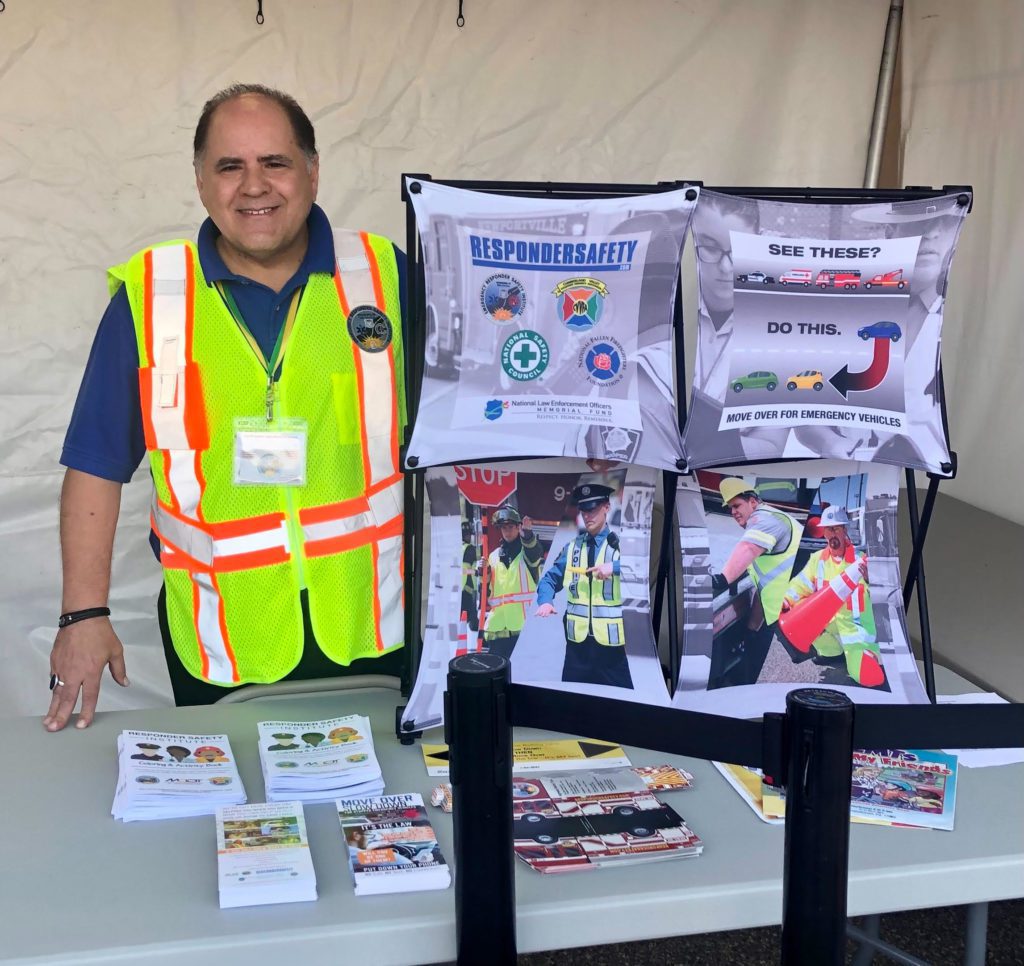James Garcia: the Force Behind the Passage of Move Over Laws Across the U.S.

In 1994, James Garcia was working as a paramedic tending to a crash scene in South Carolina. As he was helping his patient on the side of a two-lane highway, a driver going 45 mph struck Garcia. Fortunately, he recovered from his injuries. Since then, he has devoted his time to keeping first responders safe by advocating for Move Over Laws, which require all vehicles approaching an emergency scene, marked by flashing lights and first responders, to slow down and move over into a lane away from emergency activity.
The third Saturday of every October is National Move Over Day. This year, October 16th was a day where “responders, roadway workers, and communities across the United States promoted awareness of Move Over laws,” according to Garcia. Move Over Laws are now mandatory in all 50 states, but getting it to this place has not been an easy task for Garcia.
After much research, and personally lobbying the South Carolina (SC) state legislature, Garcia was instrumental to SC being the first state to implement a Move Over Law in 1996. However, this issue was not contained to just one state — it had national implications, so Garcia took further action. “Honestly, I spent from 1996 until 2002 calling and begging anybody in the country to listen and believe me that this was a problem. Nobody believed it was a priority because we didn’t have statistics, we didn’t have dash cams, and nobody was reporting it, so no one believed it was significant enough to worry about,” he recalled.
Advancements in technology such as dash cams, and several tragic high-profile responder deaths clearly demonstrated the need for first responder safety to be heard on a larger platform. In 2002, The U.S. Department of Transportation and Federal Highway Administration got involved and, with Garcia’s expertise, made Move Over Laws a part of the federally enforced Manual on Uniform Traffic Control Devices (MUTCD) which, according to their website, “contains the national standards governing all traffic control devices. All public agencies and owners of private roads open to public travel across the nation rely on the MUTCD to bring uniformity to the roadway.”
How many states have a Move Over Law?
From 2002-2012 a version of Garcia’s Move Over Law has been passed in every state, with Hawaii being the final state to pass the law.
The issue of first responder safety is extremely important because it’s difficult to save someone else’s life when the responder is threatened as well. According to the Emergency Responder Safety Institute, two emergency responders are struck each day, on average, while working along the roadway; one emergency responder is struck and killed every seven days, on average, while working along the roadway. But numbers are higher this year: to date in 2021, 52 first responders have been killed while working along the roadway.
Even though states have Move Over Laws in place, Garcia is working tirelessly to continue his work towards first responder safety because the fight is far from over. He urges people to take action with him by calling their congressperson and expressing the importance of this issue, because there is not enough federal time nor money devoted to researching this issue and collecting necessary data to further legal change. The scientific collection of facts and figures regarding first responder incidents on the roadway proves how big of an issue these incidents are, and will prevent them from being ignored.
Additionally, Garcia recommends contacting your local American Automobile Association (AAA), which has been actively involved in supporting Move Over Laws because their workers are in danger as well when responding to calls on the roadway. Finally, Garcia encourages the education of young drivers in forums like drivers education, or at home, to ensure that the next generation of drivers puts first responder safety in their mind when getting behind the wheel.
Highlighting responder safety issues to the general public has been the first step toward combating first responder roadway injuries and fatalities “When we are on the job,” says Garcia, “we need to focus on our patient care. We need to focus on saving lives. That’s why we’re there. But right now, we’re also afraid of being hit every time we’re on the highway. Those cars miss us by inches, and it distracts us. When we’re constantly looking over our shoulder, it’s hard to do our job.”
“It’s really pretty simple,” he continued. “When you see flashing lights ahead, slow down, then move over and be prepared to stop. Of the hundreds of responder deaths analyzed, not one death occurred when a driver both slowed down and moved over.”
By being aware, creating the necessary laws, and taking action, every single driver on the road can do their part to make sure first responders are safe enough on the roadway to do their job — because one day it may be you who needs their help.
More Resource About The Move Over Law Available At:
-
- www.respondersafety.com
- http://traaonline.com/
- https://www.ace.aaa.com/automotive/advocacy/slow-down-move-over.html
- https://www.haasalert.com/solutions#move-over-laws
- https://www.openalpr.com/post/rekor-applauds-new-york-state-assembly-for-bill-to-enforce-move-over-violations-and-protect-safety-of-law-enforcement-and-roadside-workers
- https://highways.dot.gov/public-roads/julyaugust-2013/successfully-managing-traffic-incidents-no-accident




